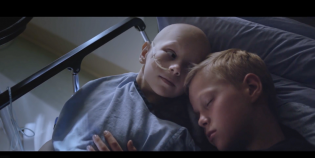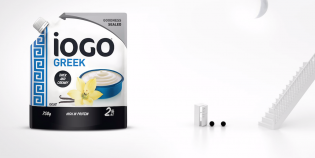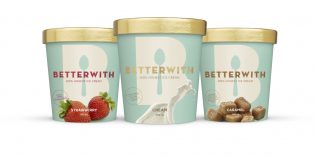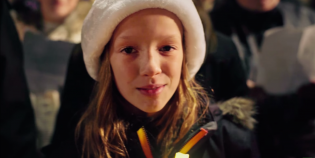Vital insights, gossip and predictions from June’s Festival of Creativity in the south of France
Throughout the 2012 International Festival of Creativity, BBC World News was fixated on the Greek election – a crucial moment in the bid to keep Europe from collapsing into economic ruin.
That spectre has loomed large over the world economy for two years now, but seemed to take a stronger hold of the ad industry through the early part of 2012 when budgets tightened and pessimism around the industry seemed to spike.
With that as a backdrop, one might have expected a more subdued Cannes Lionsthis year, not unlike the 2009 festival taking place six months after the market crashed. But the opposite was true. Total registered attendees were up a remarkable 20% this year and submissions were up 19%.
Where once the big global agencies like DDB and Leo Burnett threw lavish parties, it was the online giants that wanted to play host to the industy and splashed out lavishly.
Just like the industry itself, Cannes Lions has changed dramatically and satisfies those attending like few other creative events on the planet. For Canadian marketers and agency execs, flying half way around the world and spending seven or even eight nights in a hotel in a Mediterranean resort town is a costly proposition. But the ROI is there, delivered in three broad ways: the speakers, the networking and the awards.
Marketing’s editorial team blanketed the Festival, reporting on the disruptive discussions and buying anonymous sources $20 beers to get the insights that mattered.
If you missed it this year, read on to catch up. If you were there, consider this a clear-headed review. And after you do, start making the case to be there in 2013. Your argument for doing so starts now.
The Speakers
Festival organizers have made a concerted effort to increase the quantity and quality of the seminars in Cannes. Think TED for the ad biz.
This year there were 119 different sessions over six days compared to 87 in 2011. As for the quality, they can’t all be homeruns, and on occasion it’s clear style trumps substance (perhaps befitting a festival rooted in advertising).
Some session sponsors wheeled out big names who sent tweeted photos flying who were only tangentially tied to the industry in any way. Sapient Nitro, for example, wowed with Omar Epps, Grey brought Debbie Harry and Grupo ABC impressed with Bill Clinton. MTV parent company Viacom put Selena Gomez on a panel to explain millenials. “They can smell a fake from miles away,” Gomez, the recording artist responsible for “Love You Like a Love Song,” revealed.
For what was billed as the “Cannes Debate” Sir Martin Sorrell sat down with London 2012 chair Sebastien Coe and Brazilian soccer legend Ronaldo to discuss the upcoming Olympics in London as well as the 2016 Olympics in Rio and 2014 FIFA World Cup in Brazil. After 20 minutes the only clear message was that all three events are going to be great for the host countries. We didn’t stay till the end.
But ask around and everyone has a session that amazed or a speaker who blew the crowd away. Some enlightened and delivered impressive insight into world-class marketing. Diageo chief marketing officer Andy Fennell, for example, gave a fascinating talk on his company’s branded content. Others were less impactful but still worth the price of admission. General Motor’s Joel Ewanick and ad agency deity Jeff Goodby opened a bottle of wine and chatted for more than hour about their 20-year, on-again-off-again partnership going back to how Goodby won the Porsche business even though he couldn’t make the pitch because his wife was in labour.
The topic of GM and Facebook came up only briefly and in jest. Instead it was two old friends just talking. It wasn’t particularly crucial to industry insight, but it was entertaining.
Attendees also got to eavesdrop on Dan Wieden and John Hegarty talking about the industry and each other’s work. Hegarty recalled the first time he saw Weiden’s “I’m on a horse” for Old Spice. “You know something is great because you really really fucking hate it,” he said. All of a sudden clients want to know why you’re not producing work like that, he said.
The pair lamented the poor quality of much advertising today (without sounding curmudgeonly). There’s too much “strategy and bullshit,” said Weiden. To produce better work, just “be honest,” he advised.
“We have advertising truths as opposed to human truths,” added Hegarty, quoting one of his creatives. “What we should be looking for is human truths.”
The Networking (Read: The Parties)
Yes, there is a lot of late-night networking, but the people you meet during the Festival and the discussions you have with them can be invaluable.
The people who go to Cannes are obsessed with marketing, advertising, media and creativity. Even late into the night, well after what Canadians would consider “last call,” people are talking about the industry. Over glasses of rosé and bottles of $20-beer, they share ideas, offer advice, debate and discuss the business for good and bad.
And as much as the advertising world produces its own creative star system, those industry superstars are usually willing to listen to the most junior of copywriters, be it in the Palais, during one of the galas and parties or as the sun comes up on the Gutter Bar.
On Wednesday night, day four of the Festival, Web2Mobile’s Deb Hall was buzzing about this, her first Cannes Lions visit.
Earlier in the day, Hall and her protégé Marla Natoli of Olive Media took in the Draftfcb-sponsored presentation by acclaimed Parisienne street artist JR, famous for his desire to “turn the world inside out” with oversized outdoor portrait projects in troubled areas of the world and his “Women Are Heroes” film.
Hall sat in the second row, awed by JR’s commitment to affecting change—“He was stirring up trouble. It made me think why can’t I stir up trouble,” she says—when Natoli leaned over with an idea. For a while they’ve been trying to find a project that would fit a new image overlay mobile concept they’ve been developing, using image recognition instead of QR codes to trigger a mobile video experience. JR’s portraits would be perfect, said Natoli.
When the session was over the pair rushed the stage. “I literally yelled at Howard Draft,” recalled Hall. “I was banging on the stage like a crazy person.” Draft was interested (or scared) enough to listen to their idea. “You’ve got to tell JR,” he said. Hall boosted Natoli up onto the stage and Draft took her back to deliver her pitch to JR himself. He liked the idea and Natoli has been talking with his team to explore if they can actually work together.
It’s perhaps an extreme case, but illustrative of the underlying ethos of the Festival: celebrating and sharing great ideas about creativity—by any means necessary.
The Work
As much as Festival organizers have emphasized the speakers, there is little doubt the International Festival of Creativity is first and foremost about the work and the various competitions whose categories multiply annually. This year Branded Content and Mobile were added, and total entries were up 19%.
Walk through the galleries of winning and shortlisted work and you see people studying them, discussing the strengths and weaknesses, how it is similar but different from other executions from another time, and if the judges got it right.
Journalists covering the Festival get the added bonus of sitting in a room with the jury for up to an hour and hearing them explain why they awarded what they did (see tips on pg. 23) and, more interestingly, what the work says about where the industry is going. This is the work that becomes the case studies for agencies trying to sell ideas around the world, said Tom Elsinger during the Festival’s mobile conference.
“This work not only changes people’s lives by winning a Gold Cannes Lion, it is this stuff that affects our industry. It affects our business.”
And while it may not have been a exceptional year in terms of the work (a sentiment expressed by a few senior creatives) an important theme connected much of the winners that makes a strong statement about the industry in 2012.
Craft and big ad ideas still matter, but the judges were most impressed with brands doing things that have a tangible, beneficial impact on consumers and the world.
Cyber jury president Ian Tait articulated the trend most clearly when discussing the two Cyber Grand Prix winners: the Nike+ Fuelband from R/GA which can digitally track users’ every movement and calorie-burning activity, and @Sweden for the Swedish government which handed the country’s Twitter duties over to a difference citizen each week.
“Both of these pieces are about brands behaving in a certain way,” he said. “They are not about what they say, they are not about messages. They are about things that brands do.”
“It’s not about storytelling,” added AKQA’s Rei Inamoto. “It is about brands behaving certain ways.”
He went on to explain the new reality for marketers and their agencies: less attention on saturating consumers with brand messages and more focus on becoming a meaningful part of their lives every day.
“I think there has been way too much obsession with 360 degrees of integration of communication when people don’t give a shit about a poster or a TV ad,” he said.
“And I see the shift from 360 degrees of communication to 365 days of connection.”
Transparency and providing consumer benefits are hardly new ideas anymore; Dove’s Evolution was 2007 afterall. But the concept dominated jury discussions with the media. Variations on the brands-should-change-the-world theme came up time and again.
In the Film competition the Grand Prix went to Mexican fast food chain Chipotle for a great ad, but one that doesn’t sell 99-cent burrittos. It promotes the chain’s decision to support sustainable farming practices.
Indeed, at times the judges seemed preoccupied with altruism over advertising. In the press competition the Grand Prix went to the controversial “Unhate” campaign for Benetton that showed normally hostile political leaders locked in passionate kisses.
“We chose this because it’s a pointed message,” said jury president Tham Khai Meng. The campaign combats hatred around the world, he said. “It goes beyond advertising.”
Meng talked about the responsibility of the industry to come up with “world-changing” ideas and, when pressed by some of the reporters, the judges went so far as to suggest marketers should have a voice on global issues not unlike “leaders of governments.”
“Brands are some of the biggest residents in the world,” said Grant Jacobsen, executive CD at DDB South Africa.
The winning work in the Titanium competition is a real reflection of where the industry is going, said judge Rob Schwartz of TBWA\Chiat\Day. Agencies are trying to solve problems and promote things like peace, he said. “That’s a pretty good product.”
Hyperbole aside, the underlying message of authenticity and transparency applies even for marketers that don’t have “promote world peace” as a brief.
The social media-driven new world order means people can find out what your brand does and how it does it. There is no hiding. Behave right and stand for something important and then give your agency the freedom to weave that into your brand story. You might just win a Lion in Cannes in 2013. Start making the business case to be there now.
The Golden Rules
While everyone gets to see the winning work, only reporters get to attend the press conferences where judges explain why they picked what they did and occasionally offer advice for how to enter next time. Here’s the insider, from-the-trenches jury intel to help.
Don’t try too hard to chase cool: Many entries in Outdoor relied solely upon technology to impress judges, said Lo Sheung Yan, jury president. For some of the entries it seemed liked technology was being used just for the sake of being used. “The key is whether you are driving technology or technology is driving you,” he said.
Think twice about categories: “Some entries were just fantastic pieces of work… but just in the wrong category,” said Geoffrey Handley from The Hyperfactory, who was on the Mobile jury. “It’s not up to us to move things around. It is the entrants’ responsibility to enter work in the right category.”
Don’t repeat your entries: It may not be easy producing case videos, but judges don’t like seeing the same video used in multiple categories, said Paul Gunning, CEO for Tribal DDB Worldwide and a member of the Mobile jury. If judges are trying to evaluate a very specific part of a campaign for its craft, for example, the main case video which is focused on the idea may not explain that dimension as clearly as it needs to. “Take a little more care in what [you] enter, not just where [you] enter,” he said.
Be honest: No matter how cool the case video, it has t be honest. Judges will not be seduced by fantastical claims and will dig deeper and get confirmation. The Cyber jury removed a few entries “because the case studies were bordering on fraudulent,” said jury president Ian Tait.
Thinking Cyber? Think tools: The category was very lightly entered in 2012 and only two entries made it to the shortlist and just one Bronze Lion was awarded. “We know there are people out there that make phenomenal tools that would be great in this category,” said Tait.
Branded content starts with the audience: “Traditional advertising is about figuring out a unique selling proposition, features and benefits [that are] driven and connect product to people,” said Branded Content jury president Avi Savar, adding that winning branded content work “inverts” that model. “We start with people stories first and figure out how to connect stories to product.”










